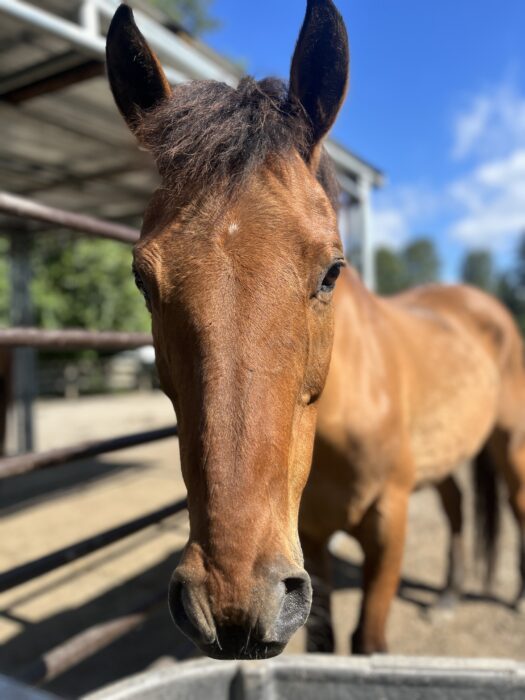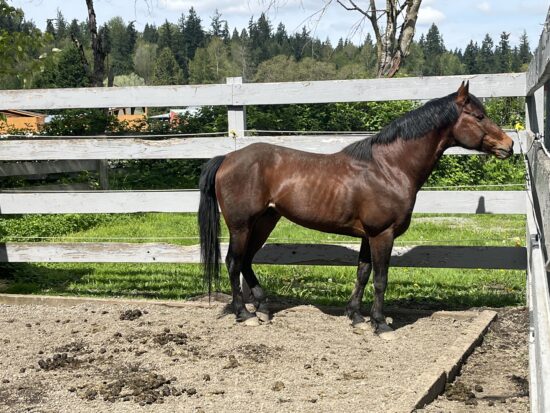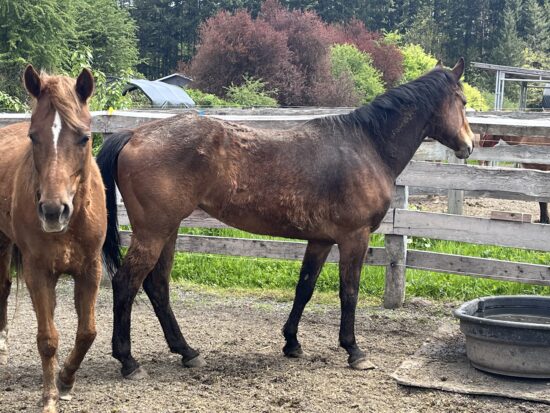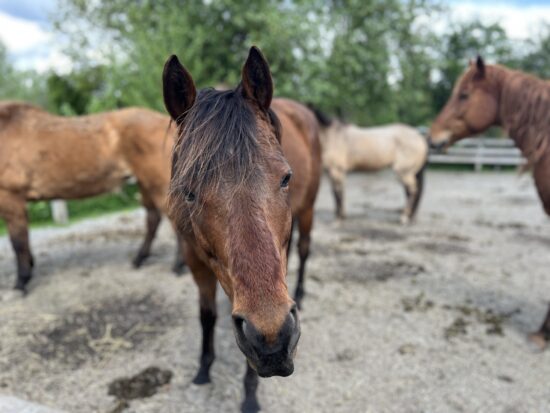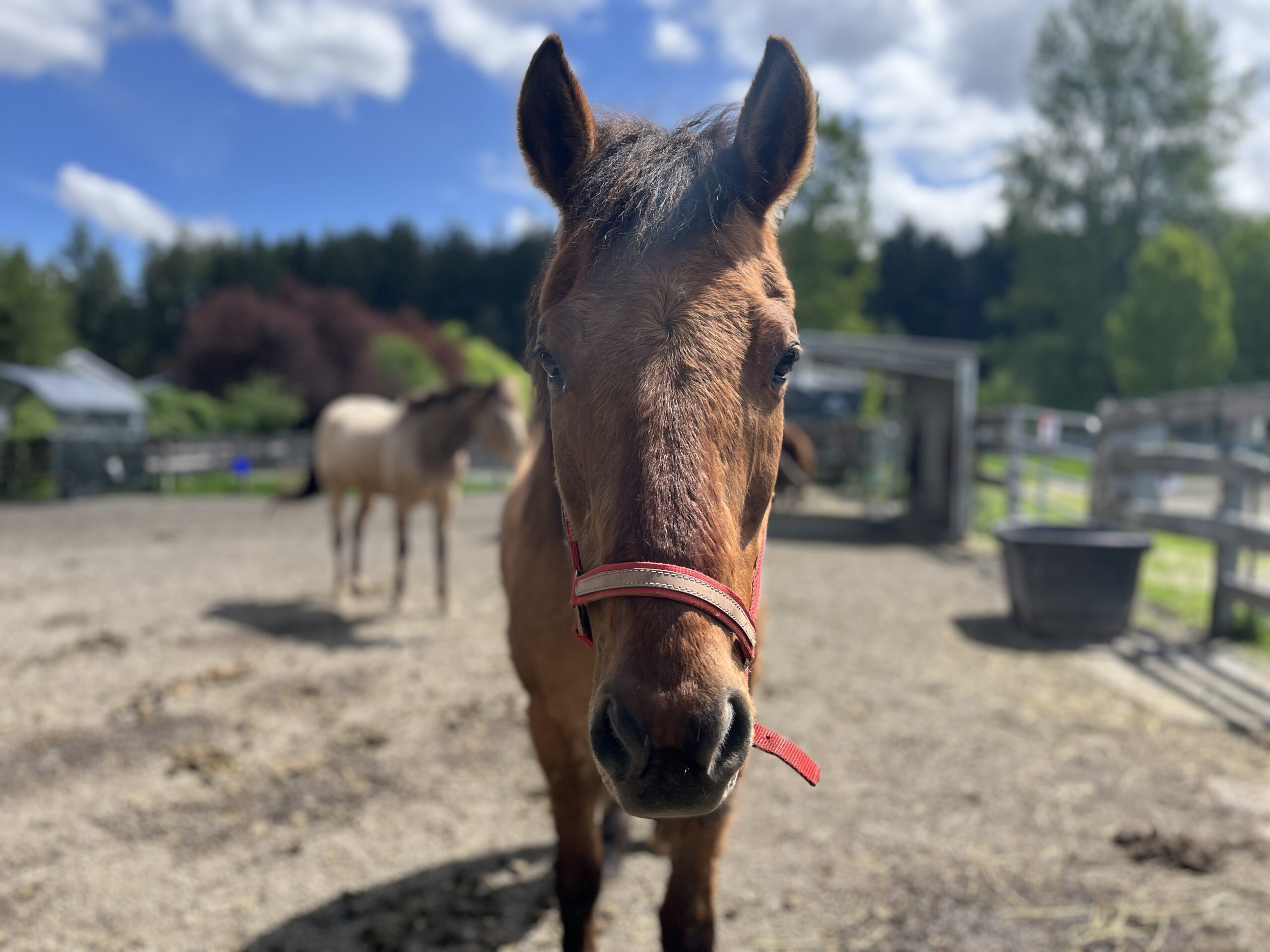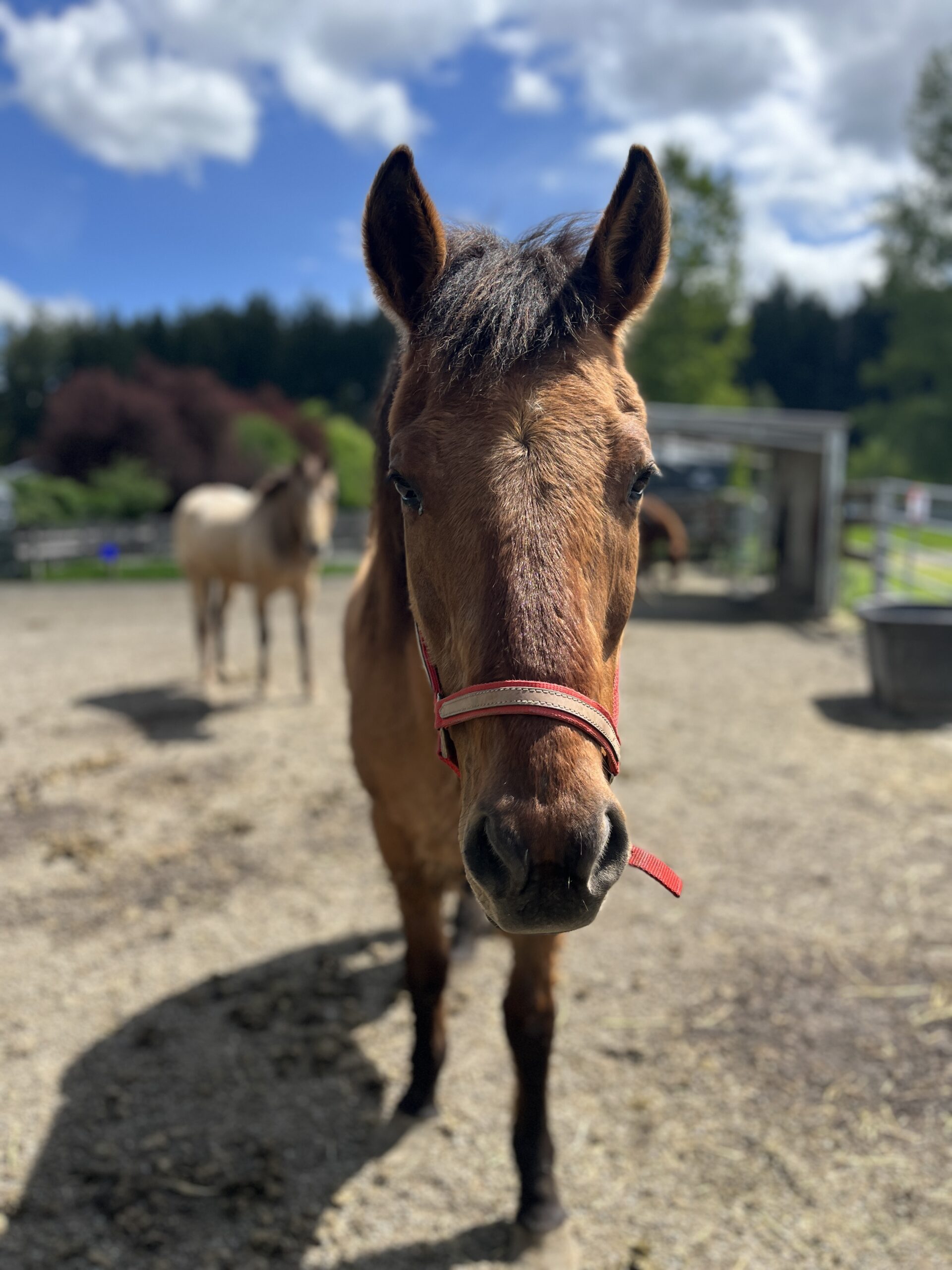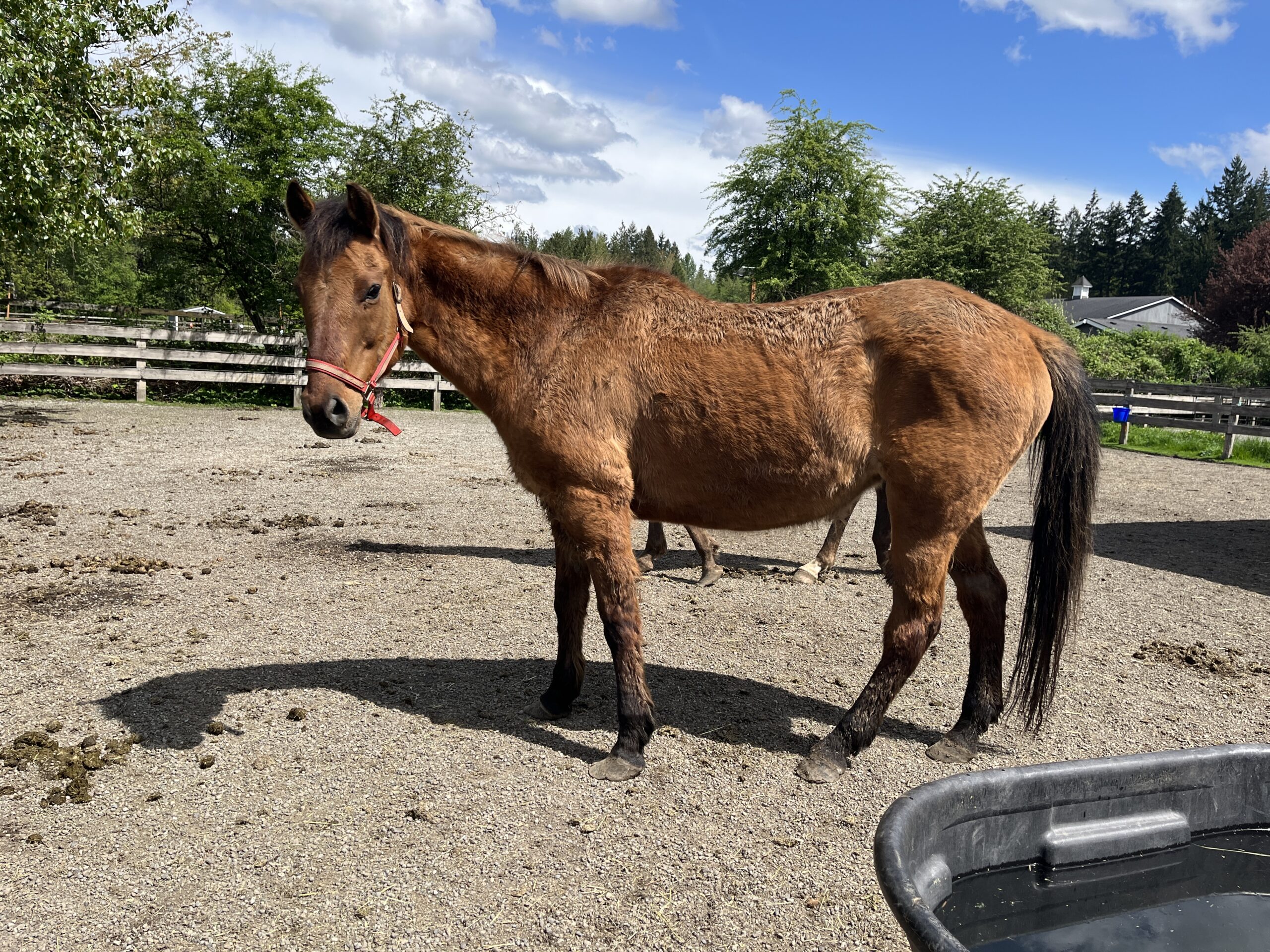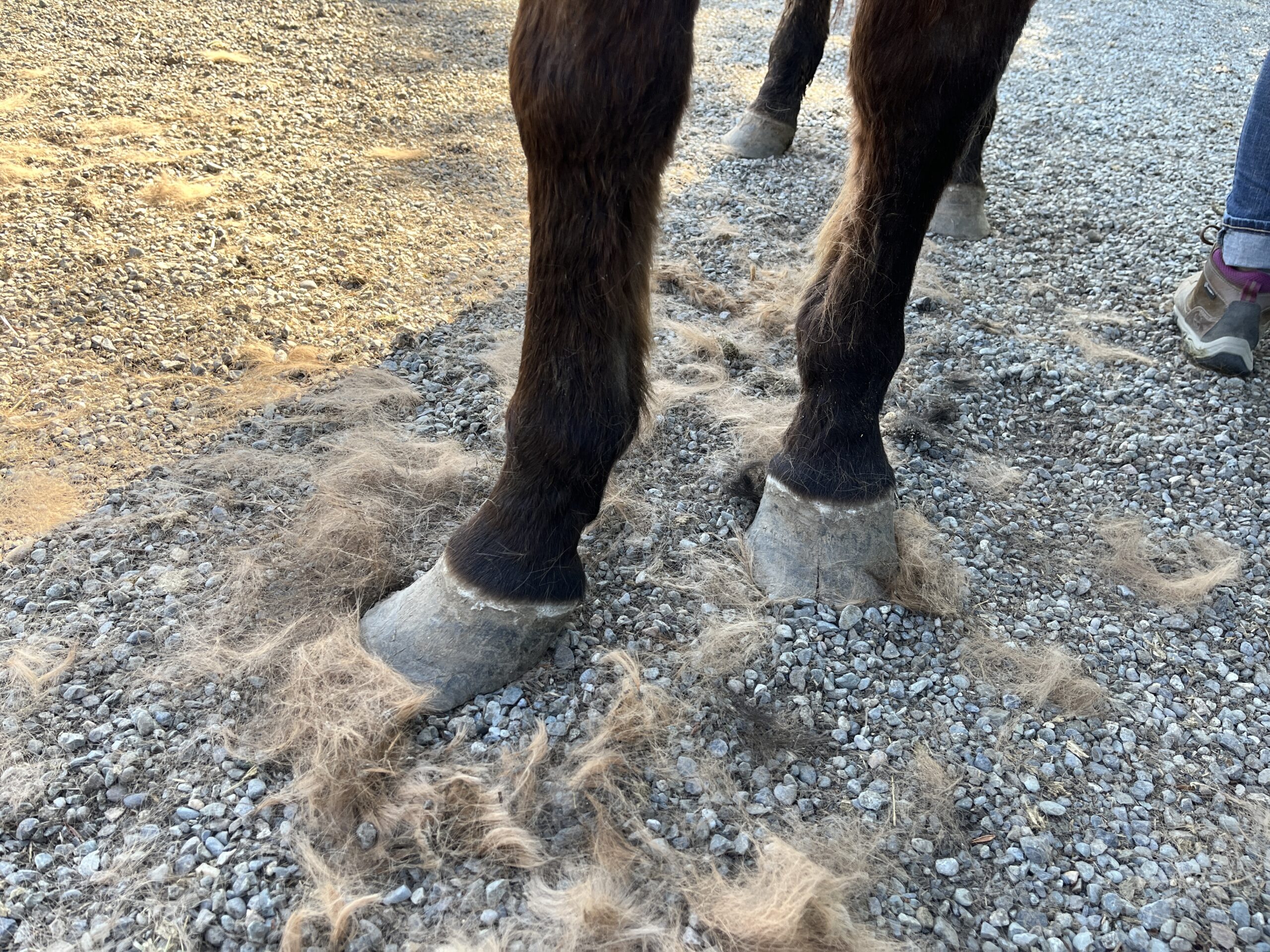Meadow
~2000 dun Quarter Horse mare
Type of Rescue: Owner Surrender
Intake Date: 05/06/2023
Date of Passing: 06/16/2023
Length of Time with SAFE: 1 month
Meadow came to SAFE in May of 2023 as part of a 7 horse owner surrender situation in the Gig Harbor area. She, along with her 6 herd mates, were living in poor conditions, surrounded by broken panels, standing in deep mud, without clean water. She was one of the oldest of the group, likely in her 20s. She was also one of the more gentle horses, allowing us to halter and brush her from day 1.
One morning, about a month after she arrived, Meadow began displaying some mild colick‑y symptoms. Despite the best efforts of ourselves and our vets, Meadow was just not improving. After nearly 10 days of trying to find a solution, we made the informed decision to let Meadow go.
Though she was not with us for very long, Meadow knew nothing but love and care while she was. She also knew what it was to always have a full belly and fresh, clean water at all times. We were grateful for the time we did get to spend with this sweet mare, and we are happy she is out of suffering now, forever.
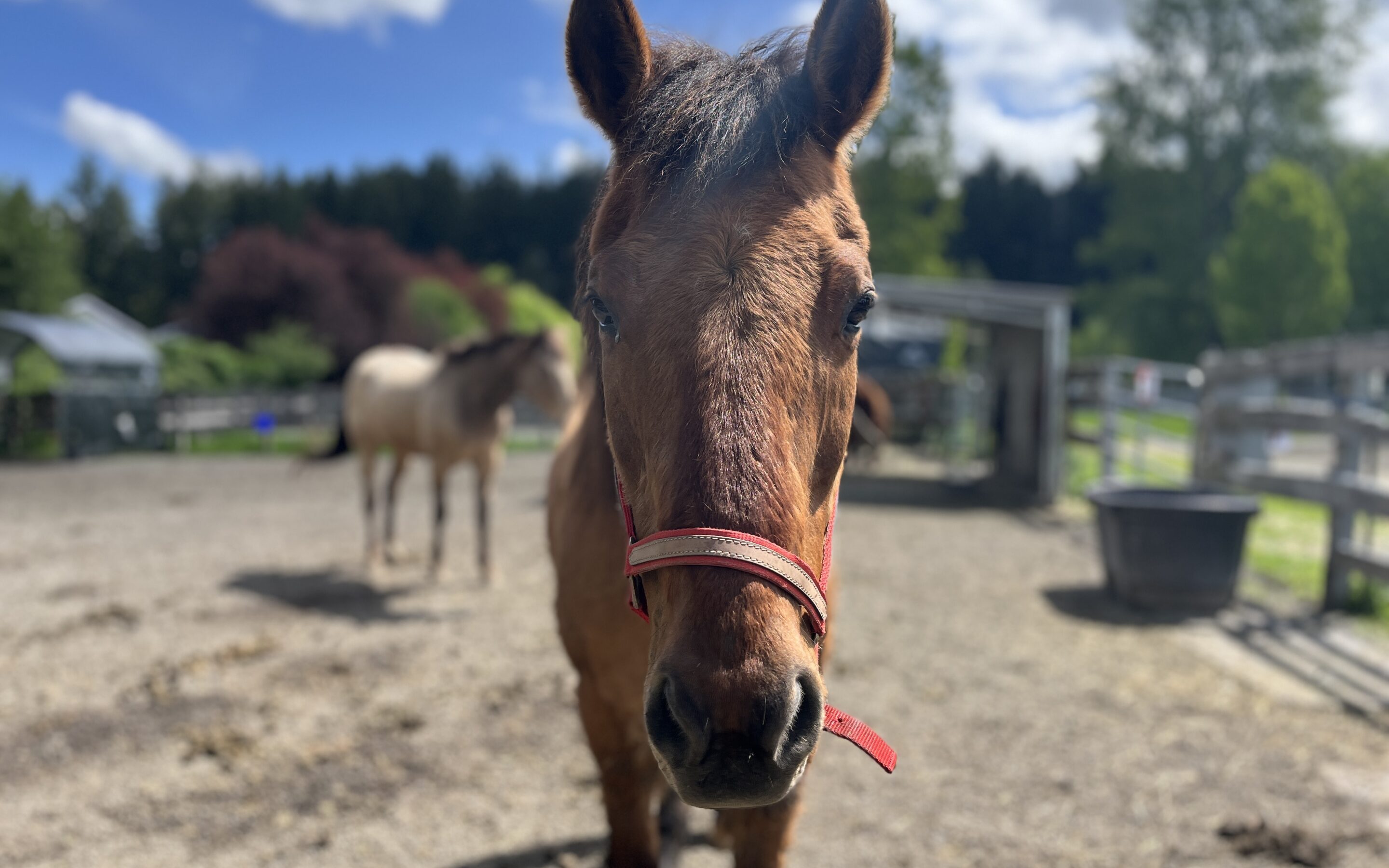
Remembering Meadow
Meadow was one of the 7 Gig Harbor horses who came to SAFE in May. Likely the oldest of the group, she was believed to be somewhere in her 20s. She was the most gentle of all the horses on the property, allowing us to halter her from day one, and give her a nice thorough brushing as soon as she arrived at SAFE. Unfortunately, a little less than a month into her stay here, Meadow suffered from a long-term colic, and we made the informed decision to euthanize. During her time at SAFE, Meadow knew nothing but clean water, dry ground, consistent feedings, and a lot of people who cared very much about her well being. She allowed us to help her up until the very end, when she showed us very clearly that she was done with her fight, a fight that looked like this:
We had our vets out multiple times, where they tubed her with fluids, and had her scoped for ulcers a few days in. In this scope, we found her stomach to be full of hay – an amount equal to if she had had a full breakfast that morning, despite not having eaten for a good two days. The scope also did reveal some small ulcers. But despite her full stomach and her still gurgling digestive tract, she was only passing a small amount of completely liquid manure about once a day. Our vets worked alongside us tirelessly to provide her with relief. We gave her banamine twice a day, we administered gastrogard and sucralfate for the ulcers. We watched her through the night on our camera to check that things weren’t worsening. We offered her mashes, and trotted her out to try and get her motility back. We tried grazing her, and even giving her some hay when her interest in grain declined. We started her on metronidazole to help try and firm up the loose stool she was having. But despite our best efforts, we weren’t seeing any real improvement.
A week later, her heart rate was elevated for the first time since this all began. Banamine brought it down a little, but not a lot. She was also beginning to show a less agreeable side, not wanting us to approach her, pinning her ears and showing us her teeth when we tried to halter her. This was perhaps always something that was in there, but during this whole time, she had been the perfect patient, letting us give her medications both orally and rectally, standing well for vet checks and blood draws, and putting up with a whole lot of handling that we had not previously prepared her for. This shift in her demeanor was troubling, because it meant that going forward, we would not be able to as readily help her out.
The next morning, she was spending the majority of her time lying down. Not thrashing or rolling, but clearly there had been some kind of change in her level of comfort. She was also not as interested in eating the things that had been whetting her appetite – hay and grass.
Dr. Lewis came out, and found that her heart rate was still elevated. She was still difficult to handle, and with a pain level that seemed to be increasing, we decided that the kindest thing to do for Meadow would be to free her from her pain and let her go peacefully.
We did not know Meadow for long, but in the time we spent with her we knew a sweet mare who let us help her until she was ready to say goodbye. I am so thankful that she was able to be at SAFE at her end, where we were able to make the decision to keep her from further pain, and where she could be laid to rest on soft, dry ground surrounded by love. Her friends were able to witness her passing, which was easy and peaceful. I’d like to think she’s become one with her namesake, frolicking pain-free.

Introducing the Gig Harbor 7
The majority of the horses who come to SAFE come as singles or in pairs. One here, one there, typically with some space in between arrivals. But on occasion, we are called to assist with a larger seizure. It hasn’t been all that long since the Fall City 40, and an even shorter period since we took in the Graham 27. Now, we were once again called to help with a multi-horse intake. Seven horses in the Gig Harbor area needed our help, the owner needing to quickly re-home horses that were not easily re-homeable. On the heels of the Graham horses, we felt a bit more prepared for a larger intake, but unlike the Graham horses, these horses had not had regular (or any) handling in some time.
So on a Saturday morning, we loaded up our trailers with panels, and set out with a robust team of people and a brigade of trailers and a plan to pull seven horses out of the mud.
Thanks to a ton of planning, a great deal of manpower, and an earlier scope of the property, we were able to successfully remove all the horses from the property over the course of just a few hours. We ran chutes from the pens, some quite winding and intricate, but everyone left unscathed, and arrived at SAFE in one piece.
Lancelot, the stallion, was the first to pull through the gates.
Next were mother and daughter, Ciara and Inula,
followed by the small herd of mares: Meadow and Mirana, the elders of the group, (and the only ones who allowed us to halter them), and Wren and Harissa.
Seeing them at SAFE was like seeing them with the lights clicked on for the first time. It was clear they were in need of some TLC, but out of the mud and muck, it became obvious just how much. Their feet were overgrown, slippered in some cases. The four mares had a line of what appeared to be rotten hair halfway up their legs, likely a result of standing in a high layer of wet ground. The mother and daughter stank, a smell like rotting, and while there was nothing visibly deceased on the property, it felt very much like a place where death lived. All of them, when confronted with clean water troughs, drank long and deep.
It was clear from the moment we set eyes on the horses that they would take some work to rehab and retrain. Even the mares who let us halter them were not keen on being touched much beyond that. We certainly had our work cut out for us. But this was not the first time that challenging horses had come through our gates, and it will not be the last. The road ahead might be long, but the most important thing is that these horses are safe now, and that is all that matters.

